 An old yet new inn blending contemporary art, antiques, and crafts in Kuwana City, Mie Prefecture, the gateway to Ise.
An old yet new inn blending contemporary art, antiques, and crafts in Kuwana City, Mie Prefecture, the gateway to Ise.MIWA Holdings Co., Ltd. (hereinafter "MIWA") and Gallery NAO MASAKI (hereinafter "GNM") have opened "MARUYO HOTEL Semba" in Funabacho, Kuwana City, the gateway to Ise, with accommodations limited to one group per day.
■MARUYO HOTEL Semba
The hotel is a renovated version of the original building of Maruyo Lumber, founded in the Meiji era, over 70 years ago. The first floor features a lounge, two twin rooms (each with its own bathroom), and an open-air bath. The second floor features a spacious hall overlooking the Ibi River and Sumiyoshi Shrine. This entire hotel, limited to one group per day (currently up to four guests), evokes the atmosphere of the gateway to Ise. The interior design and art direction were overseen by Nao Masaki, who has run a contemporary art and craft gallery in Nagoya for 15 years. MARUYO HOTEL combines contemporary art and antiques, including works by Sadaharu Horio of the Gutai movement, Edo-period cedar door paintings, and bamboo chairs by Ubunji Kidokoro. The hotel also features a cup by Koichi Uchida, a renowned Mie Prefecture artist, and a bamboo basket by Rokansai Iizuka, coveted by collectors worldwide. This exquisitely balanced blend of the past and present, art, crafts, and antiques, creates a space and time.
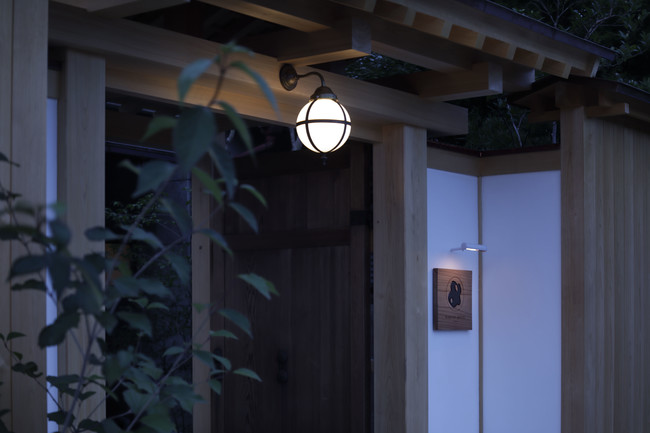
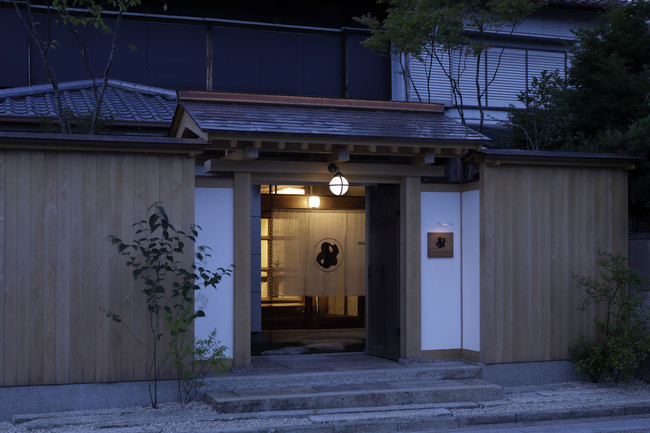

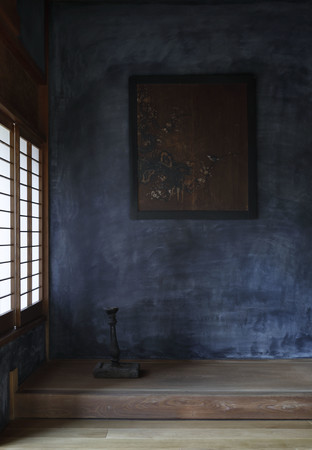
Kuwana, the Gateway to Ise During the Edo period, Funabacho, Kuwana City, was home to the Shichiri no Watashi Ferry, the only sea route on the Tokaido. The town is home to the "Ise Ichino Torii," a sacred gate that is rebuilt every 20 years during the Shikinen Sengu (rebuilding of the shrine) ceremony at Ise. Because the boat journey from Nagoya was fraught with danger, passing through the gate was likely considered akin to a purification ritual. Many travelers must have felt as though they had entered the land of the gods. Kuwana also flourished as a distribution hub, located where the Kiso River meets the river. Until the prewar period, the rice market was here, and many businessmen became wealthy overnight. Restaurants and entertainment districts flourished, and at its peak, it is said that there were over 200 geisha and as many as 120 inns.
A lumber merchant's main family home passed down from the Meiji era to the Reiwa era During World War II, Kuwana was subjected to massive air raids, leaving the entire area in burnt ruins and destroying the main Maruyo Lumber family home. After the war, despite a lack of resources, the family worked hard to gather lumber and rebuilt the building that is now the MARUYO HOTEL, one of the first in the neighborhood to do so as a testament to recovery. When the Reiwa era began and the building was left vacant, Takeshi Sato, the great-great-grandson of Maruyo Lumber's founder and president of MIWA Holdings, took it over. Takeshi has previously worked on Pavillion MIWA, a members-only salon in Paris that promotes Japanese culture, and The Lodge MIWA, a rental accommodation facility in Kyoto renovated from a 70-year-old traditional Japanese house. From an international perspective, we unraveled the history and culture of our family and the local community, and the connections between the past and present. We inherited the "Maruyo" trade name and logo, passed down since our founding, and created MARUYO HOTEL.
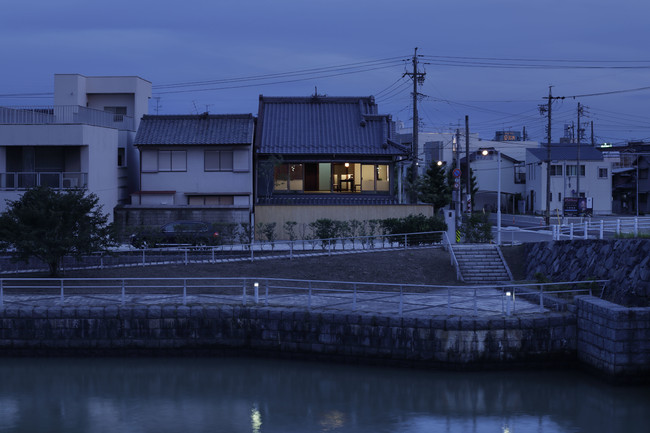
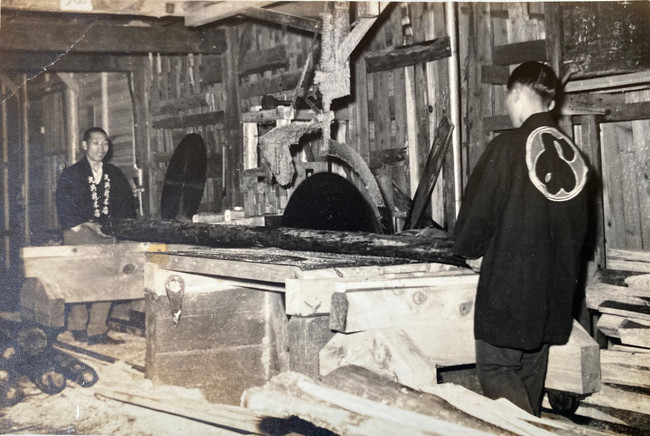
■Lounge & Dining Room
The first-floor lounge is a space where you can enjoy reading or tea time, surrounded by earthen walls. The dining room on the second floor can be used as a place for conversation or a meal. Gazing out at the riverside scenery that unfolds before your eyes, you can imagine the passing of travelers from days gone by, and feel as if you have traveled back in time. The rough earthen walls, which remain unchanged since the house was built, seem to exude the passage of over 70 years. Please enjoy the scenery and the eternal flow of time that permeates this place.

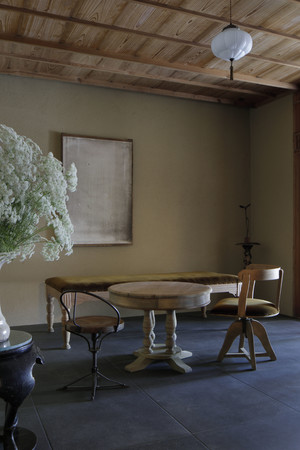
■Guest Room [room 0]
Nearby MARUYO HOTEL is Rokkaen, a Meiji-era Western-style building designed by Josiah Conder, famous for designing the Rokumeikan. The Western-style rooms, designed in homage to Conder, feature white plaster walls and elegant interiors, creating a comfortable atmosphere. When the main gate closes at night, a private garden appears through the antique French glass doors, creating a beautiful space for guests to gaze upon.

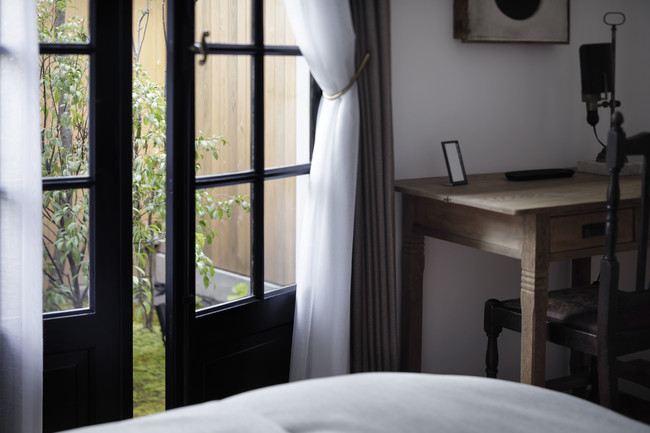
■Guest Room [room 1]
The master bedroom features an impressive alcove with a bluish black plaster finish reminiscent of the night sky. Turning your gaze to the garden, the moss in the small garden visible through the snow-viewing shoji screens stands out against the black wall, and the cypress open-air bath gently connects to the bathroom. Beautifully illuminated by the moonlight at night, it offers a luxurious time to gaze upon the refreshing sky in the morning. A space where you can fully enjoy two different faces, day and night, where time flows peacefully yet extraordinary.
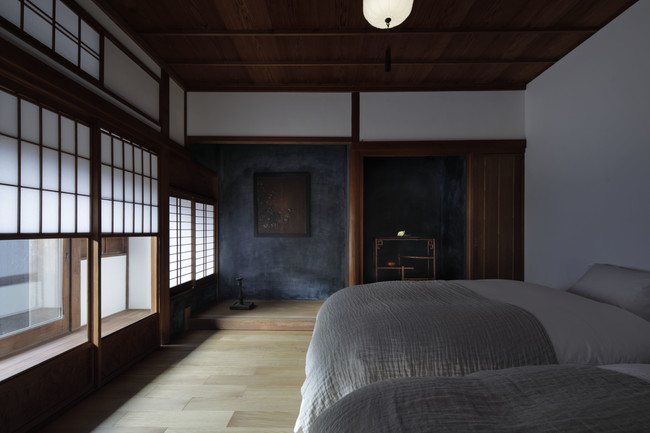
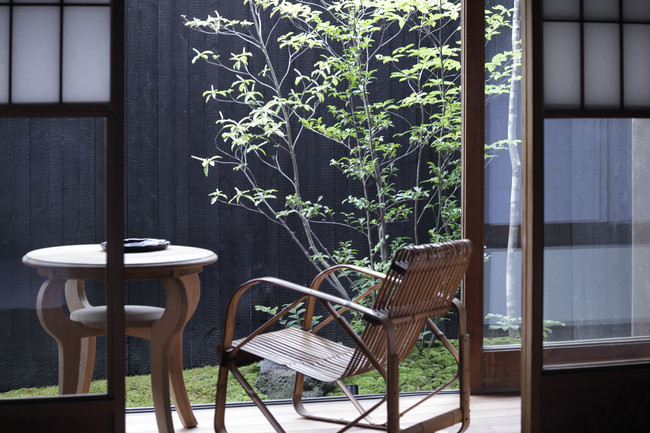
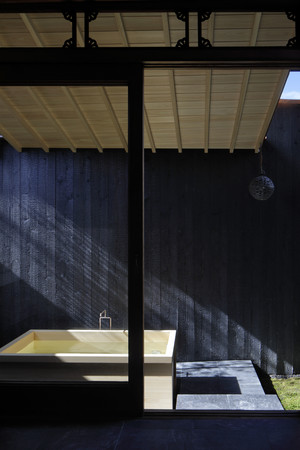
■ A simple breakfast made with fresh ingredients
We carefully serve freshly squeezed orange juice, freshly ground coffee, freshly baked croissants, and other ingredients from Kuwana. Enjoy your meal in the dining room on the second floor while feeling the refreshing morning breeze.
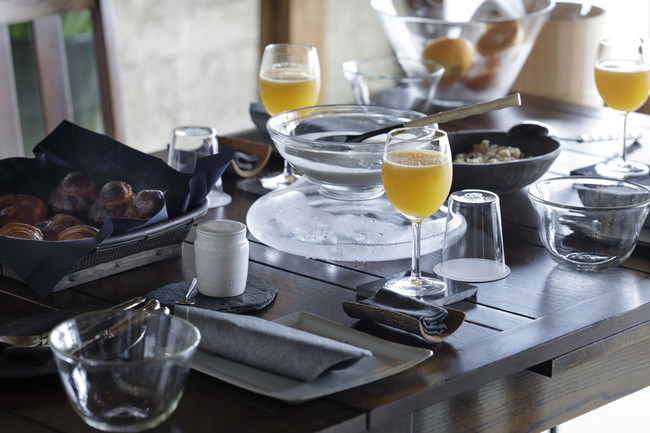

■ Dinner set plans at restaurants such as "Hinode," a famous clam hotpot restaurant, and "Kochuten," a one-star French restaurant.
MARUYO HOTEL is a one-night stay (breakfast included) accommodation; dinner is not included. It is known for being within walking distance of many famous restaurants, including "Hinode," known for its clam hotpot, and "Kakinan," known for its Matsusaka beef sukiyaki. Neighboring Nagoya is just a 30-minute drive away, and we offer dinner set plans at restaurants such as the one-star French restaurant, Kochuten.
■ Cruise Plan from Nagoya to Kuwana
We also offer a cruise plan that takes you across the Shichiri-no-Watashi ferry from Atsuta in Nagoya to Kuwana, just like in the Edo period. The view of Kuwana from the sea, with its many waterways, is reminiscent of Venice.
Be sure to visit MARUYO HOTEL semba in Funaba-cho, Kuwana City, Mie Prefecture, the gateway to Ise, steeped in history and tradition.
【Facility Information】
MARUYO HOTEL Semba
Address: 23 Funabacho, Kuwana City, Mie Prefecture
Number of Rooms: 2 rooms total (120m²) 1-4 guests available. Parking available.
【Accommodation Inquiries】
TEL: 090-2773-0004
Email: info@maruyohotel.com
URL: https://www.maruyohotel.com
MARUYO HOTEL Semba
Address: 23 Funabacho, Kuwana City, Mie Prefecture
Number of Rooms: 2 rooms total (120m²) 1-4 guests available. Parking available.
【Accommodation Inquiries】
TEL: 090-2773-0004
Email: info@maruyohotel.com
URL: https://www.maruyohotel.com
Click here for company press release details
The press release featured in this article was provided by PR Co., Ltd. Press releases from companies and other organizations provided by TIMES are posted in their original form. FASHION HEADLINE does not recommend the products or services posted, nor does it guarantee the content of the press releases. For inquiries regarding the content posted, please contact PR TIMES Inc. directly (https://prtimes.jp/).



















![Our Fashion Story [vol.28_ DIOR × Contemporary]](https://wrqc9vvfhu8e.global.ssl.fastly.net/api/image/crop/533x712/images/upload/2025/11/1d7732ea5c65c54c096829dba8830b9e.jpg)













